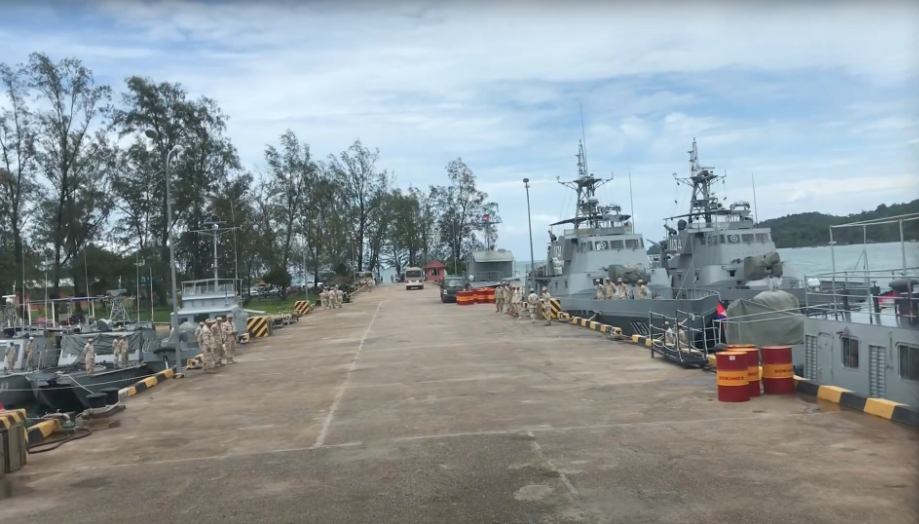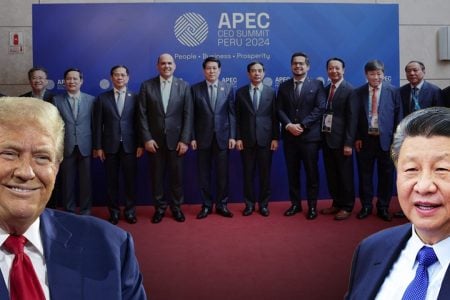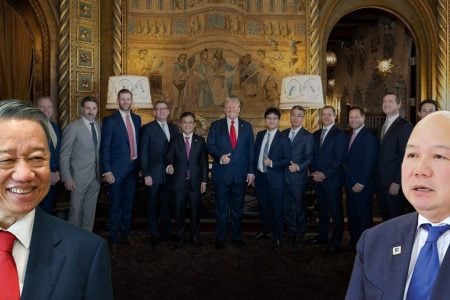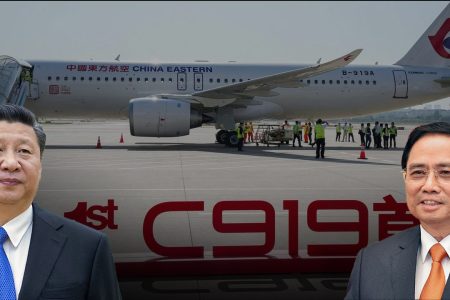
The US continues to denounce the Ream military base
On October 13, directly referring to China, the spokesman of the US Embassy in Phnom Penh, Cambodia – Chad Roedemeier, – said: „We have reliable information about the People’s Republic of China continuing to build a big project at Ream Naval Base.“ Mr. Chad Roedemeier said that the Cambodian government has not been completely transparent about the intention, nature and scale of the above project, or about the Chinese military’s role in the project raises concerns about the intended use of the Ream military base violating Cambodia’s Constitution and undermining regional security.
The US Embassy official asserted that the Cambodian people „have a right to know better about this project and need to speak out and demand transparency about this military agreement, because it will have long-term effects for the country.”
Earlier, on October 12, the website of the Center for Strategic and International Studies (CSIS) published a number of satellite images taken by technology company Maxar Technologies & Planet Labs showing from September 9-August 22, 2021, two new buildings were constructed towards the north of Ream Naval Base. These are buildings next to two structures built since spring of this year.
At the end of August 2021, a new road has begun to be constructed from the southwest gate of Ream base to the beach area with new constructions. This project will continue to be built in the first days of October. In August, cleanup work also began on a walkway extending from the southwest to the new road, located behind a hospital built by Vietnam.
This suggests there is a possibility that a second road is being worked on to cut across a large area that Cambodia has prepared and then sealed off in 2019, right before the news of China reaching an agreement access to this base. So far, all that is built in this area remains unclear.
What does Cambodia say?
On October 14, the Cambodian government denied the US Embassy in Phnom Penh’s claim that China was carrying out construction activities at Ream Naval Base in southwestern Cambodia. Cambodian government spokesman Phay Siphan emphasized that the US’s accusations are baseless and only repeat what Prime Minister Hun Sen has repeatedly proven to be fake information many times before.
Mr. Phay Siphan said Cambodia is fully capable of developing the Ream base on its own and will not allow any outside country to place military facilities on its territorial sovereignty. „We welcome all countries, including the United States, to support the construction of Ream Naval Base, and also welcome China’s help,“ he stressed.
Why is America concerned?
The Ream naval base has been at the center of tension in US-Cambodia relations for several years now, after the Wall Street Journal reported in 2019 about the existence of a secret agreement in which Cambodia agreed to continue accept Chinese military personnel at this coastal base. After that, Cambodia’s sudden destruction of US-supported naval facilities annoyed Washington even though Cambodia insisted on not favoring any country.
At the beginning of June 2021, US Deputy Secretary of State Wendy Sherman expressed concern about China’s military presence in Cambodia, and wanted the Phnom Penh government to explain the demolition of military facilities constructed by US funding. As the highest-ranking US official to visit Cambodia in many years, Ms. Sherman expressed concern and made the above suggestion during a meeting with Prime Minister Hun Sen on June 1.
The Pentagon in 2020 said Washington was concerned about reports that the Cambodian Navy’s tactical command headquarters at Ream Naval Base had been demolished and asked the Cambodian side to explain this incident. The headquarters is only about 30 meters long and houses a number of small patrol boats. By October 2020, Cambodia said it had razed this headquarters to serve the renovation and expansion and would move the demolished headquarters to another location, but denied the information about China’s involvement. However, Cambodia later confirmed that China was directly involved in repairing and renovating this base.
Since 2019, US officials have repeatedly expressed concern that two Chinese-funded projects in Cambodia are designed to give the Chinese military a foothold in Southeast Asia.
The two bases that raise concern are both along Cambodia’s southwestern coast. The first is the Ream Naval Base operated by the Royal Cambodian Navy in Sihanoukville province, with an area of about 76 hectares. Since 2010, this has been the site of annual joint training and naval exercises between Cambodia and the US within the framework of the Cooperation on Training and Readiness at Sea (CARAT) program.
The base is undergoing major renovations with funding from China. The infrastructure includes many small buildings, one of which was built by the US in 2012 and is a center for maritime security. In January 2020, Cambodia asked the US if it would pay to upgrade the building. The US agreed, but within a few months, Cambodia changed its mind and said it no longer needed American help. Instead, China will pay for the upgrade. By September 2020, the maritime security center had been relocated and the building was demolished.
The second site is further away, on the coast at Dara Sakor in Koh Kong province. In 2008, a consortium of Chinese construction companies led by the Union Development Corporation (UDG) negotiated a 99-year contract with the Cambodian Government to lease 36,000 hectares (360 million square meters) of prime real estate outside the beach at Dara Sakor. This area covers 20% of Cambodia’s coastline. The $3.8 billion industrial, residential and tourism project includes a deep-water port and a 3.2-kilometer airport runway that can accommodate most military aircraft. Since then, the project has become one of China’s Belt and Road Initiative (BRI) projects.
Ream and Dara Sakor head to the Gulf of Thailand, and the Chinese warships deployed there will take only a day to reach the strategically important Strait of Malacca through which most of China’s energy imports pass. Chinese analysts have long viewed the Strait of Malacca as a strategic vulnerability. The presence of warships nearby to protect Chinese cargo ships could help alleviate Beijing’s energy insecurity.
Vietnam needs to speak up
Cambodia has an important geostrategic position as it is located on the shores of the Gulf of Thailand and also belongs to the Association of Southeast Asian Nations (ASEAN).
The presence of a military base in Cambodia on the Gulf of Thailand will further facilitate the Chinese Navy’s (PLAN) access to the southern flank of the South China Sea and improve its ability to respond to any conflict near the Strait of Malacca, which is geo-strategically important to China, through which about 80% of its fuel imports pass.
China’s military presence in Cambodia will be of no value in promoting Beijing’s expansive claims in the South China Sea as it has built major military bases on seven artificial islands in the South China Sea. Sa. But it will put pressure on Vietnam. Should a Sino-Vietnamese crisis arise over the disputed islands, Beijing could send a strategic message by sending warships and military planes to Cambodia as a warning to Hanoi.
The PLA presence in Cambodia would also deal a blow to bilateral relations with Vietnam. Although Hun Sen has close ties with China, he has always been careful to cultivate cordial political ties with Hanoi.
Vietnam has a close relationship with Cambodia and Mr. Hun Sen. Recently, the leaders of three countries Vietnam, Laos and Cambodia had a meeting to express this intimacy. Next year, Cambodia will also hold the chair of ASEAN. Therefore, Vietnam needs to frankly voice its concerns about the possibility that China will set up a military base in Cambodia. Many experts believe that Vietnam’s diplomacy towards Laos and Cambodia still carries the old ideology, always emphasizing brotherhood, without frankly stating the benefits and accompanying demands. So far, the land border demarcation between Vietnam and Cambodia has not been completed for a number of reasons, including subjective negligence on the part of Vietnam.
Thoibao.de (Translated)




























